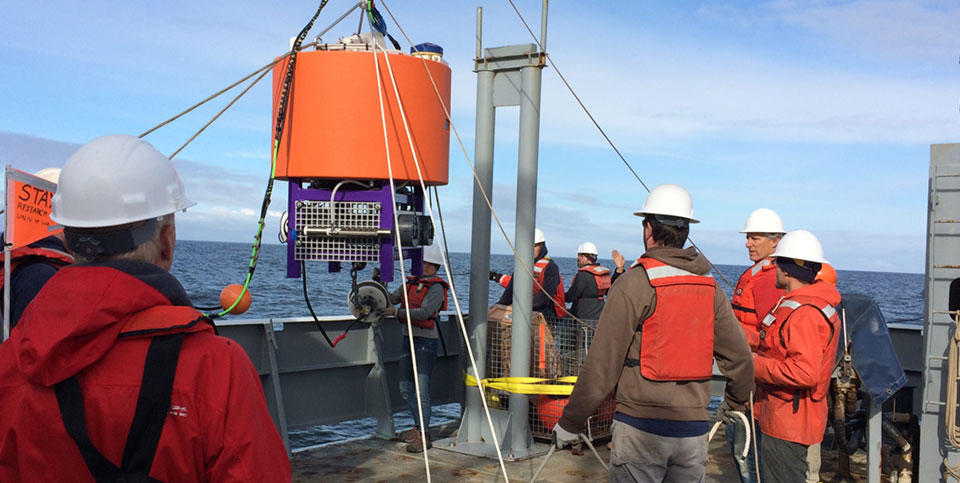High Tech Tool to Aid in Pacific Northwest Toxin Detection
NOAA, partners deploy experimental "robot" to measure paralytic shellfish toxins.

Red Tide Robot
The Environmental Sample Processor, shown here prior to deployment, is an underwater robot that can remotely measure paralytic shellfish toxins. Credit: University of Washington
NOAA and partners are expanding the use of an underwater robot that enables remote, automated measurements of toxic harmful algal blooms (HABs), known to contaminate shellfish and poison humans that consume them. Already used in monitoring the dinoflagellate Alexandrium, the algae that causes toxic red tides in the Gulf of Maine, the robot is now deployed in the Pacific Northwest to monitor HABs of Pseudo-nitzschia.
The robot, called the Environmental Sample Processor (ESP), was deployed by the University of Washington on May 23, 2016, and will provide data on both Pseudo-nitzschia cell and toxin concentrations off the coast of Washington. By including the ability to detect the toxin domoic acid on the robot during deployment, scientists are better able to assess the toxicity level of a given algal bloom.
The information collected by the ESP will be conveyed in near-real time to scientists, coastal managers, and public health officials to support decisions related to potential shellfish harvesting closures.
Such decision-making is critical for the coastal communities that experience financial hardships due to the closing of commercial beds and whose livelihoods depend on the industry. For example, a 2005 algal bloom cost Massachusetts nearly $50 million and Maine about $23 million in economic losses.
Did you know?
In 2015, a massive Pseudo-nitzschia bloom stretched from central California to the Alaska Peninsula, resulting in closures of razor clam and dungeness crab fisheries. The full economic impacts of this harmful algal bloom outbreak are yet to be determined.
